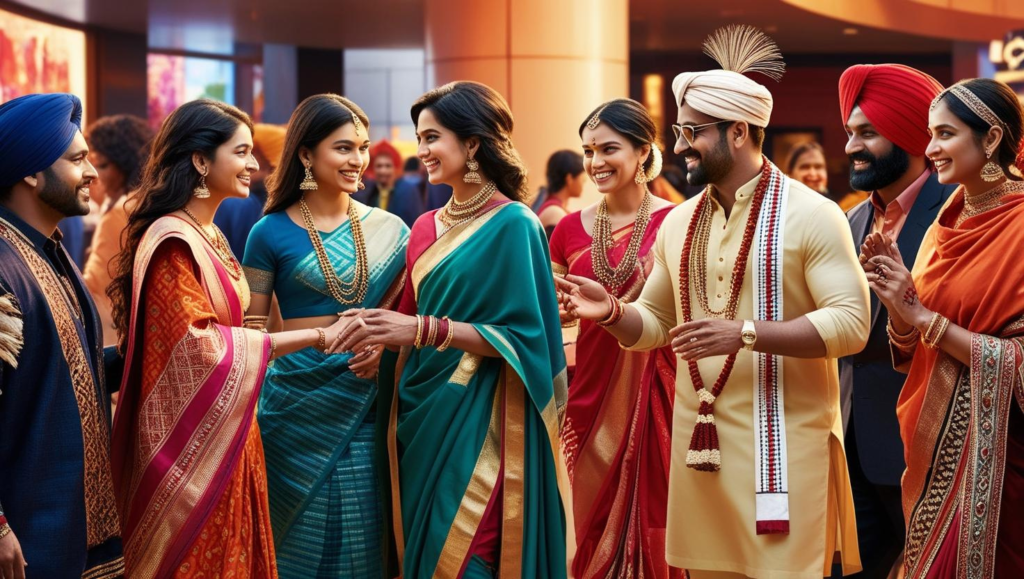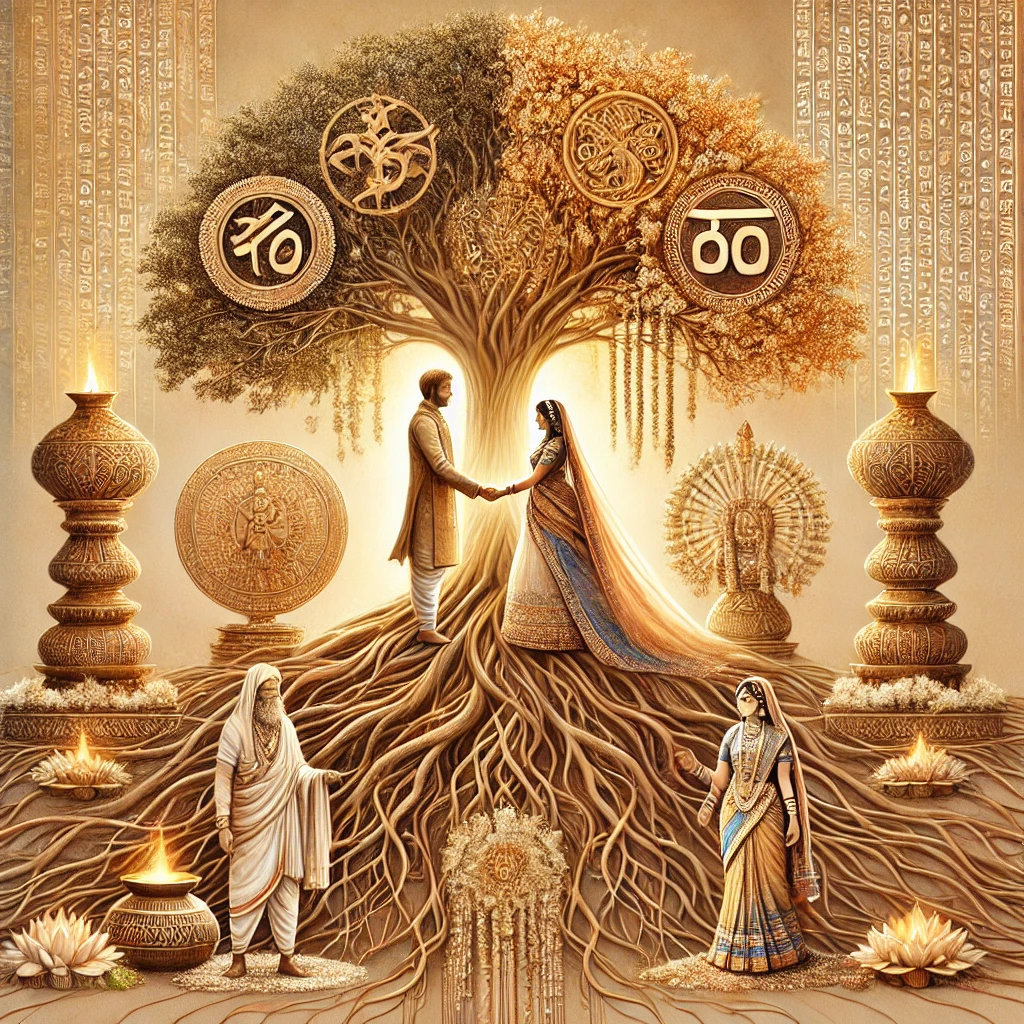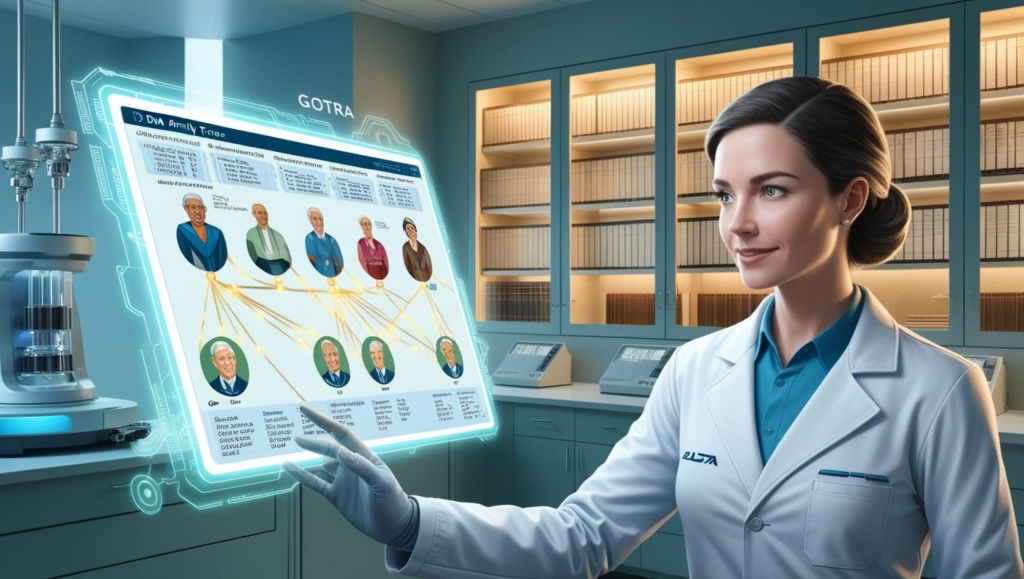Explore Gotras
Urban and Global Influence

Understanding Gotras in a Modern Context
Gotras, which originate from the ancient Hindu Vedic tradition, are essentially lineage or clan identifiers used among various communities, particularly among Hindus. Traditionally, they were meant to trace one’s ancestry to a common sage or rishi and played a crucial role in marriage alliances, as people from the same Gotra were considered part of the same family lineage.
However, in modern urban and globalized settings, the perception of Gotras has evolved significantly. With increasing inter-caste and inter-religious marriages, urban migration, and globalization, the strict adherence to Gotra-based traditions has weakened. While some people still respect these traditions, many view them as less relevant in today’s fast-paced, diverse world.
The Importance of Gotras in Today’s Society
Even in modern cosmopolitan areas, Gotras still hold significance in certain ways:
- Cultural Identity – For many, Gotras serve as a connection to their ancestral roots and heritage.
- Family and Community Bonds – They help people feel a sense of belonging to a larger family structure, fostering community ties.
- Marriage Compatibility – While it is less common in urban areas, some families still consider Gotra in marriage decisions to maintain traditional customs.
- Genealogical Significance – In some cases, Gotras help families trace their lineage and ancestry, which can be useful for historical or medical reasons.
How Gotras are Perceived in Cosmopolitan and Globalized Settings
- Relaxation of Traditional Norms – In cities and among the diaspora, strict adherence to Gotra-based marriage restrictions has reduced. Many families now prioritize personal compatibility over Gotra matching.
- Interfaith and Intercultural Marriages – As people marry outside their caste, religion, or nationality, Gotras become less relevant in such unions.
- Professional and Social Settings – In workplaces and social circles, Gotras are rarely discussed, as modern identity is more influenced by education, career, and lifestyle rather than ancestral lineage.
- Legal and Ethical Challenges – In some cases, the rigid enforcement of Gotra rules (such as opposing same-Gotra marriages) has led to ethical and legal debates, particularly in India.
Advantages of Gotra System
- Preservation of Cultural Heritage – Helps maintain historical and ancestral knowledge.
- Community Bonding – Creates a sense of unity among people sharing the same Gotra.
- Medical and Genetic Benefits – Traditionally, Gotra restrictions in marriages were designed to prevent genetic disorders caused by inbreeding.
- Genealogical Tracking – Helps families trace their ancestry and maintain family history records.
Disadvantages of Gotra System
- Restrictions on Personal Choice – Can create unnecessary barriers in marriage decisions, limiting personal freedom.
- Outdated in a Modern Context – In globalized societies, strict Gotra rules feel out of place and less relevant.
- Social Division – Can reinforce caste-based discrimination and exclusion.
- Legal and Ethical Issues – In some cases, Gotra-based restrictions have led to honor-related crimes, opposition to love marriages, and legal battles.
In today’s world, Gotras still hold cultural and traditional value for many, but their influence is gradually fading in cosmopolitan and globalized environments. While they can serve as a way to stay connected to one’s roots, they should not restrict personal choices, especially in areas like marriage and social mobility. The challenge lies in balancing tradition with modern values of equality, personal freedom, and inclusivity.
Embracing Tradition While Moving Forward
The concept of Gotras, deeply rooted in ancient traditions, continues to hold significance for many, even as societies evolve. In modern, cosmopolitan settings, the rigid application of Gotra-based rules has relaxed, giving way to personal choice, love, and individuality. While Gotras can still serve as a link to one’s ancestry, history, and cultural identity, they should not become barriers that restrict progress, relationships, or equality.
The key lies in striking a balance—honoring tradition while adapting to the realities of today’s interconnected, diverse world. By embracing the wisdom behind Gotras without rigidly enforcing outdated restrictions, society can create an inclusive environment where heritage is respected, but personal freedom and modern values take center stage. Ultimately, the future should be one where traditions enrich lives, rather than limit them.
Gotras and Inter-Caste Marriages

Understanding Gotras in the Context of Inter-Caste Marriages
Gotras, originally established in Hindu traditions, serve as a way to trace one’s lineage to an ancient sage (rishi). Traditionally, people of the same Gotra were considered to belong to the same family line and were discouraged from marrying each other. This practice was primarily followed to prevent close blood relatives from marrying, ensuring genetic diversity.
However, as societies have modernized and inter-caste marriages have become more common, the role of Gotras in marriage decisions has shifted significantly. In a world where love, education, and compatibility play a greater role in choosing life partners, strict adherence to Gotra-based restrictions is gradually fading.
The Importance of Gotras in Inter-Caste Marriages
Although the influence of Gotras in urban and global settings is diminishing, they still hold relevance in certain areas:
- Cultural Identity – Gotras serve as a way for people to connect with their ancestry and cultural heritage.
- Marriage Compatibility in Traditional Families – In some conservative families, Gotra matching is still considered a crucial part of arranged marriages, even in inter-caste unions.
- Family Acceptance – In cases where inter-caste marriages occur, understanding each other’s Gotra can help in convincing families to accept the relationship.
- Genetic and Ancestral Tracking – Though not as widely practiced today, Gotras have historically been used to track lineage and avoid close-relative marriages.
Changing Social Norms: How Inter-Caste Marriages are Redefining Gotras
With urbanization, globalization, and increased social mobility, several shifts in attitudes toward Gotras and inter-caste marriages have emerged:
- Declining Importance of Gotras – In modern cities, many families no longer see Gotras as a major factor in marriage decisions. Compatibility, education, and shared values are now more important.
- Rise of Love Marriages – With people choosing their partners based on personal compatibility rather than caste or lineage, Gotra-based restrictions are often overlooked.
- Parental Acceptance is Growing – Although opposition still exists, more families are beginning to accept inter-caste marriages, focusing on the happiness and well-being of their children rather than traditional Gotra rules.
- Legal and Social Support – Laws in India and other countries recognize inter-caste marriages and promote equality, reducing the social stigma once associated with marrying outside one’s caste or Gotra.
Advantages of Considering Gotras in Inter-Caste Marriages
- Respect for Cultural Traditions – Incorporating Gotra knowledge can help maintain a connection to family history and traditions.
- Facilitates Family Acceptance – Understanding and respecting Gotras can sometimes make it easier for conservative families to accept inter-caste unions.
- Genealogical Benefits – For those interested in tracing their ancestry, Gotras can serve as a useful tool for understanding family history.
- Potential Health Benefits – The traditional practice of avoiding same-Gotra marriages may help reduce the risk of genetic disorders linked to inbreeding.
Disadvantages of Strict Gotra Rules in Inter-Caste Marriages
- Restricts Personal Choice – Enforcing Gotra restrictions limits individuals from choosing partners based on love, compatibility, and shared life goals.
- Perpetuates Caste-Based Divisions – Overemphasizing Gotras in marriage decisions reinforces caste barriers, which modern society is working to dissolve.
- Causes Unnecessary Social Pressure – Young couples often face resistance from families and communities when they choose to marry outside their Gotra or caste.
- Can Lead to Social Conflicts – In extreme cases, societal pressure against inter-caste marriages has led to legal battles and even honor-related crimes.
Finding a Balance Between Tradition and Modern Values
While Gotras were once a crucial part of marriage traditions, their role in modern, inter-caste marriages is changing. Today, many individuals and families prioritize love, mutual respect, and shared goals over Gotra-based restrictions. However, for those who still value this tradition, Gotras can be incorporated in a way that respects cultural heritage without limiting personal freedom.
The future of marriage in a progressive society should focus on inclusivity, understanding, and personal choice. By embracing the positive aspects of tradition while discarding outdated restrictions, we can create a world where relationships are based on love and mutual respect, rather than rigid social norms.
Embracing Love While Honoring Tradition
As society evolves, so do its traditions. The role of Gotras in inter-caste marriages reflects this transformation, where the focus is shifting from rigid ancestral rules to personal compatibility, love, and mutual respect. While Gotras once played a crucial role in preserving lineage and cultural identity, modern relationships are built on broader values like understanding, shared aspirations, and equality.
The future of marriage should not be confined by outdated social structures but should instead celebrate the diversity and richness of human connections. By striking a balance—honoring tradition where meaningful while embracing change where necessary—we can create a world where love and respect triumph over societal limitations. True progress lies in allowing individuals the freedom to choose their partners while respecting the wisdom of the past, ensuring a harmonious blend of heritage and modernity.
Technology and Genealogy

Understanding the Role of Technology in Genealogy
Genealogy, the study of family history and lineage, has traditionally relied on oral traditions, written records, and Gotra (clan) classifications in Hindu society. However, modern technology—particularly DNA testing and digital databases—has revolutionized how people trace their ancestry. Today, DNA analysis, historical records, and advanced software can provide a more accurate and scientific understanding of one’s heritage, including Gotras.
For those interested in their lineage, modern tools offer a deeper insight into their ancestry, sometimes confirming traditional Gotra classifications or even challenging them. This blend of science and tradition is changing how people perceive their historical connections.
The Importance of Technology in Tracing Gotras and Family History
- Accurate Ancestry Mapping – DNA testing helps individuals trace their genetic origins beyond verbal family traditions, offering scientific validation of lineage.
- Preserving Family History – Digital archives and genealogy software help store and organize family records, ensuring they are preserved for future generations.
- Cross-Cultural Connections – Genealogical research can reveal unexpected ancestral ties across different regions, castes, or even ethnic groups, challenging rigid societal norms.
- Medical and Genetic Benefits – DNA testing can identify hereditary health risks and genetic predispositions, helping individuals make informed healthcare decisions.
How Modern Technology is Used in Genealogy and Gotra Tracing
- DNA Testing Services – Companies like 23andMe, AncestryDNA, and MyHeritage analyze genetic markers to trace family origins, migration patterns, and genetic links.
- Digital Family Trees – Platforms like FamilySearch and Ancestry.com allow people to build, document, and verify their family lineage, making it easier to track Gotras and surnames.
- Historical Records and AI – Artificial intelligence (AI) is being used to scan and digitize ancient manuscripts, temple records, and census data to uncover historical family connections.
- Blockchain for Ancestry Tracking – Some new technologies use blockchain to store and protect genealogical records, ensuring authenticity and preventing data loss.
Advantages of Using Technology in Gotra and Genealogy Tracing
- Scientific Validation – DNA analysis provides concrete proof of ancestry, reducing reliance on oral traditions that may be inaccurate.
- Uncovering Lost Family Connections – Technology helps people reconnect with long-lost relatives and discover unexpected ancestral links.
- Medical and Genetic Insights – DNA testing can detect inherited health risks and help individuals take preventive measures.
- Convenience and Accessibility – Digital platforms allow easy access to genealogical records, even from remote locations.
- Preservation of Heritage – Digital documentation ensures that ancestral knowledge is preserved for future generations.
Disadvantages and Challenges of Using Technology for Gotra and Genealogy
- Privacy Concerns – DNA testing involves sharing personal genetic data, which raises concerns about data security and misuse.
- Questioning Traditional Beliefs – Scientific ancestry results may contradict traditional Gotra classifications, leading to confusion or cultural resistance.
- Costly Services – High-quality DNA testing and ancestry tracking can be expensive, making it inaccessible to some individuals.
- Incomplete Data – Many historical records are lost, and DNA tests may not always provide a complete picture of ancestry.
- Ethical Issues – There are concerns about how genetic information could be used for discrimination or commercial exploitation.
Tradition Meets Science in the Modern Age
The fusion of technology with genealogy is reshaping how people understand their ancestry and Gotras. While traditional Gotra-based lineage tracing has been rooted in cultural beliefs, modern DNA testing and digital tools offer a scientific and precise way to explore family history. This intersection of science and tradition can help preserve heritage while offering new insights that challenge old assumptions.
However, as with any technological advancement, it is essential to balance progress with ethical considerations, privacy, and respect for cultural traditions. Ultimately, whether through Gotras or DNA, the search for one’s roots remains a deeply personal and meaningful journey, now enriched by the power of modern innovation.
